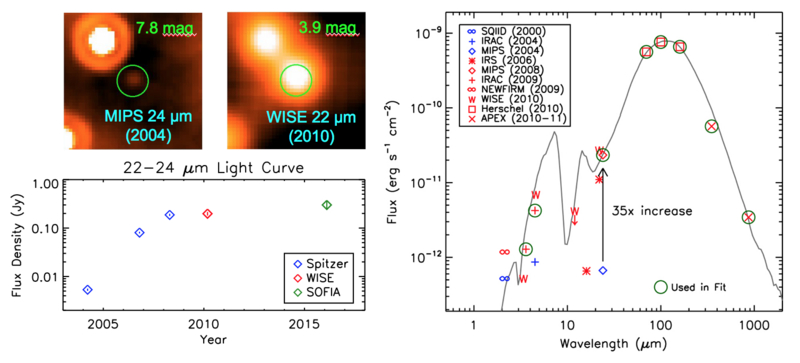| EPoS Contribution |
|
HOPS 383, the Archetypical Outbursting Class 0 Protostar
Will Fischer STScI, Baltimore, US | |
|
The earliest phases of low-mass star formation have historically been understood as the gravitational collapse of a cloud core in the absence of a circumstellar disk, while the much later optically revealed stages feature accretion from a disk that may be concentrated in stochastic bursts. In the protostellar phase, a transition from one mode to the other must occur. Luminosity outbursts in deeply embedded protostars may reveal the beginnings of this transition.
I present an update on the status of HOPS 383, the archetypical outbursting Class 0 protostar. Our team discovered that its luminosity increased by a factor of 40 between 2004 and 2006. Its post-outburst SED peaks near 100 microns, providing evidence of its young, deeply embedded state. Subsequent infrared and submillimeter observations over the intervening decade have revealed low-level variability but no evidence for a return to its pre-outburst state. HOPS 383 and other outbursts in Orion suggest that such events are more frequent in the protostellar stage than in the optically revealed stage. By comparing Spitzer and WISE data for a sample of 319 Orion protostars, we find that the average interval between outbursts in a single protostar may be as short as 740 yr but with large uncertainty. This uncertainty may be reduced with longer time baselines and monitoring of additional molecular clouds. | |
 | |
| Caption: Pre- and post-outburst images of HOPS 383, its 22-24 micron light curve, and its spectral energy distribution. The gray line is a model fit to the post-outburst SED. | |
| Collaborators: E. Safron, LSU, US S.T. Megeath, U Toledo, US E. Furlan, IPAC, US A. Stutz, U Concepcion, Chile J. Tobin, U Oklahoma, US |
Key publication
Suggested Session: Protostellar disks |

